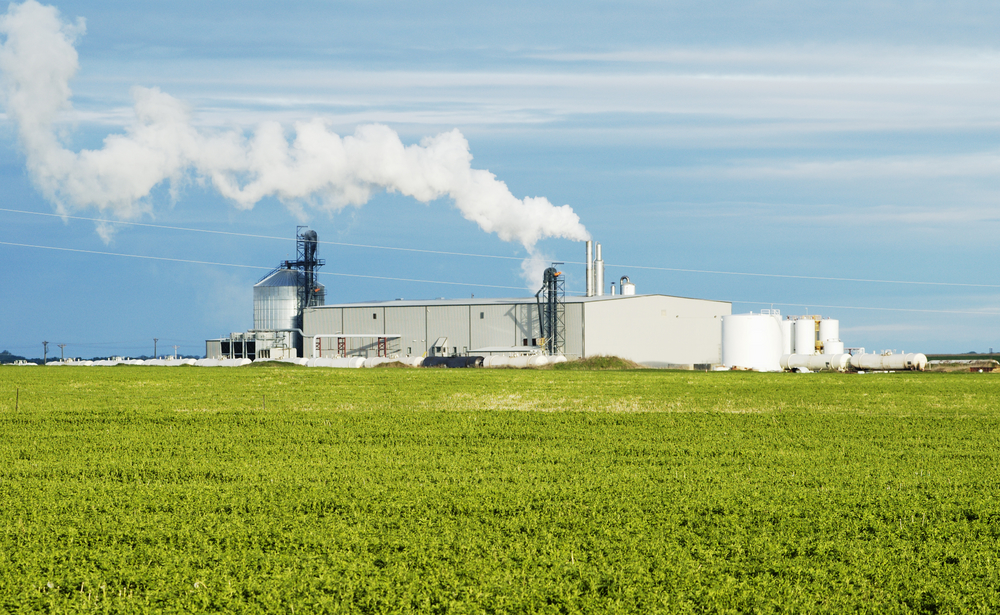by Geoff Cooper, Senior Vice President Renewable Fuels Association

If you were going to build a timber mill, would you put it in the middle of a desert, far away from the trees? If you were going into the orange juice business, would you build your processing plant in Maine, thousands of miles from the citrus groves of the Gulf Coast? Of course not.
So, why on earth would you build a grain ethanol plant where there isn’t any grain? You wouldn’t. But a new study funded in part by the National Wildlife Federation (NWF) suggests otherwise.
In essence, the NWF study argues that many corn ethanol plants were built in the middle of the native grassland prairie of the Great Plains, away from the cropland that grows the corn needed to make ethanol. The authors then use highly uncertain and error-prone satellite data to suggest that much of the “native grassland” around these ethanol plants was converted to cropland between 2008 and 2012 to support increased ethanol production. They assert that the well-documented national trend toward less cropland is covering up these purported “pockets of [land] conversion” near ethanol plants, and they claim their satellite data supports this notion.
Of course, anyone who was around during the ethanol plant building boom will recall that proximity/access to corn was the top consideration in determining where to build a new plant. Simply put, ethanol plants were built where the corn was grown, and where underutilized cropland resources (e.g., idle or fallow cropland, low-margin crops) could be switched back into grain production (in rare cases, “destination plants” were built in locations near ethanol demand centers with attractive logistics where corn was already being shipped).

Cooper
To test the NWF study’s theory regarding “pockets of conversion” around ethanol plants, we examined USDA county-level cropland data for the 180 counties where 199 grain ethanol plants were located in 2016. We relied on data that is mandatorily reported every five years by the farmers and ranchers who actually live and work on the land, not data collected by satellites that struggle mightily to distinguish between alfalfa hay, idle cropland, managed pasture, and native grassland.
Not surprisingly, our findings contradict the allegations made by the new NWF paper. The USDA data reveal that consistent with the national trend, the overwhelming majority of counties with ethanol plants witnessed reductions—not expansions—in cropland between 1997 and 2012. Specifically, we found:
- Cropland in the counties with ethanol plants fell by 2.02 million acres, or 3.5 percent, between 1997 and 2012.
- Between 2007 and 2012 specifically (i.e., encompassing the period examined by the NWF study), total cropland in counties with ethanol plants fell by 454,000 acres, or 0.8 percent.
- On an individual county basis, 2012 cropland levels were below the levels recorded in 1997, 2002, or 2007 in the large majority (84 percent) of the counties with ethanol plants. The reduction in cropland for these 151 counties averaged 11.8 percent when compared to the highest level of cropland from 1997, 2002, or 2007.
- For the small minority (16 percent) of counties with ethanol plants where 2012 cropland was higher than the amount of cropland recorded in 1997, 2002, or 2007, the increase in cropland was minor (3.1 percent on average) and coincided with reductions in Conservation Reserve Program (CRP) land and pastureland.
- Most of the counties with ethanol plants where 2012 cropland exceeded 1997, 2002, or 2007 levels are located in the heart of the Corn Belt, not the western fringe where undisturbed grassland is more common. This provides more support for the argument that expanded cropland in these counties replaced land with previous agricultural history (such as CRP or pasture)—not prairie or other native lands.
Our full analysis is available here.
About the Renewable Fuels Association
The Renewable Fuels Association is the leading trade association for America’s ethanol industry. Its mission is to advance the development, production, and use of ethanol fuel by strengthening America’s ethanol industry and raising awareness about the benefits of renewable fuels. RFA’s members are working to help America become cleaner, safer, more energy independent and economically secure. For more information, visit EthanolRFA.org.










